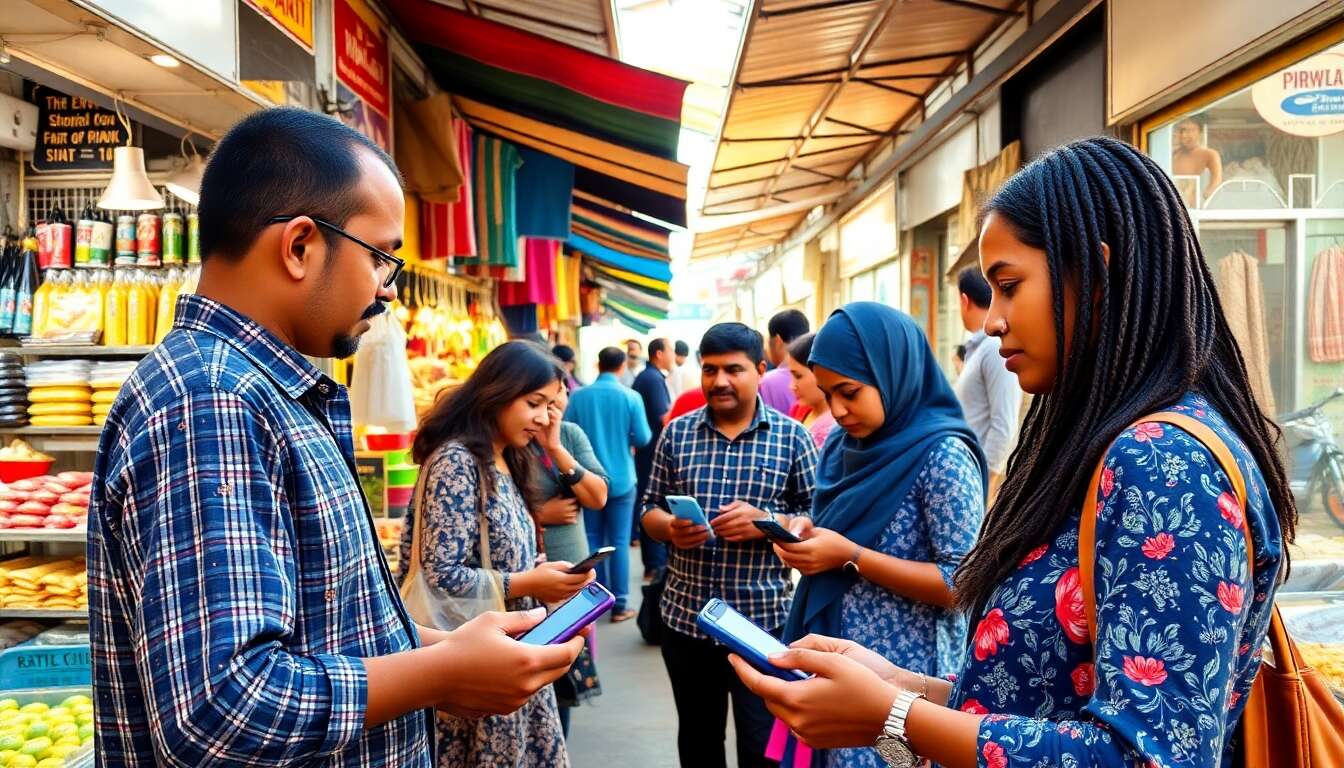html
The advent of mobile payment has emerged as a crucial solution in the financial sector, particularly in emerging economies. Since the late 2000s, this innovation has begun to reshape access to financial services for millions of people, particularly in regions where traditional banking infrastructure is lacking.
Mobile Payment: Catalyst for Financial Inclusion
Understanding Financial Inclusion
Financial inclusion refers to the availability and equality of opportunities to access financial services. In many emerging economies, a significant portion of the population remains unbanked, meaning they do not have access to basic financial services like savings accounts or credit.
This lack of access hinders economic development and can perpetuate poverty. Mobile payment serves as a catalyst for financial inclusion by providing an alternative means of accessing these essential services.
Role of Mobile Payment in Promoting Inclusion
Mobile payment systems allow users to send and receive money, pay bills, and even save funds through their mobile phones. By leveraging technology, these systems reduce the need for physical bank branches, which are often scarce in rural areas. This greatly enhances accessibility for underserved populations.
- Enable transactions without a bank account
- Lower the cost of accessing financial services
- Provide a secure platform for transactions
Empowering Underserved Populations
By offering a platform for financial transactions outside traditional banking structures, mobile payments empower individuals who would otherwise be excluded from the financial system. This empowerment has socio-economic benefits, including increased entrepreneurial activity and improved economic stability.
The next logical step is to understand how these services directly benefit users in emerging economies.
Benefits for Users in Emerging Economies

Enhancing Everyday Transactions
For many users in emerging economies, mobile payment systems have dramatically improved the ease of everyday transactions. Simplifying the payment process allows individuals to buy goods, pay for services, and transfer money efficiently.
Fostering Entrepreneurship
Mobile payment systems support entrepreneurship by facilitating microtransactions that are essential for local businesses. Small business owners can accept payments via mobile phones, broadening their customer base and driving sales.
| Feature | Traditional Banking | Mobile Payment |
|---|---|---|
| Transaction time | Several days | Instant |
| Infrastructure needs | Physical branches | Mobile network |
| Accessibility for rural areas | Limited | High |
Increasing Financial Literacy
Access to mobile payment systems also increases financial literacy among users. By engaging with financial services, individuals become more informed about managing money, saving, and investing.
Understanding these benefits clarifies the positive economic impact of mobile payments on broader scales.
The Positive Economic Impact of Mobile Payment

Driving Economic Growth
Mobile payment systems contribute to economic growth by widening the reach of financial services. They lower transaction costs, streamline payments, and enable money to move more effectively through the economy.
Reducing Poverty
By enabling financial inclusion, mobile payments contribute to poverty reduction. Access to financial services allows individuals to manage their finances more effectively, invest in education, and improve their living standards.
Boosting Employment Opportunities
The growth of mobile payment systems has led to increased employment opportunities in technology and financial sectors. This expansion generates jobs and stimulates economic activity.
As mobile payment becomes more entrenched, it’s enlightening to consider its future growth potential and trends.
Growth Forecast and Future Trends in Mobile Payment Market

Expanding User Base
The adoption of mobile payment services is projected to rise significantly. More users are expected to embrace these services as mobile technology becomes increasingly ubiquitous. This growth will be especially pronounced in underserved regions.
Innovation in Technology
Advancements in mobile technology, such as biometric authentication and blockchain, are set to enhance the security and efficiency of mobile payment systems. These innovations will likely attract more users and expand the range of services offered.
Integration with Other Financial Services
The future may see greater integration of mobile payment systems with other financial services, such as insurance and micro-lending, creating comprehensive platforms for users.
This broad view of mobile payment points the way towards a dynamic financial landscape where inclusion and efficiency are standard.
From catalyzing financial inclusion to driving economic growth, mobile payment stands as a transformative force in emerging economies. With its expanding user base, technological advancements, and integration potential, mobile payment is poised to redefine the financial landscape, making it more inclusive and effective for all.



